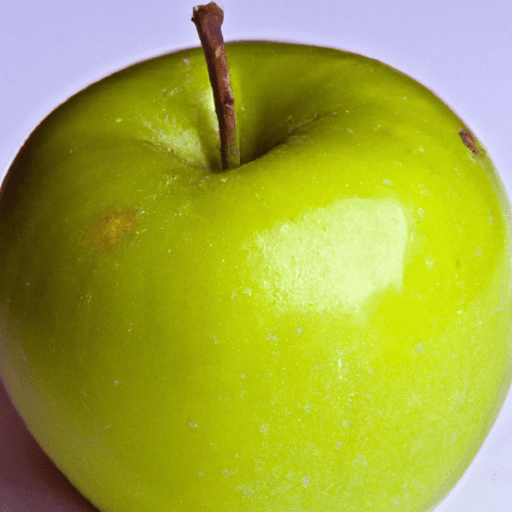Bramley Apples: The Perfect Cooking Companion
When it comes to cooking, few ingredients are as versatile and delightful as the humble Bramley apple. Bursting with flavor and offering a tangy sweetness, this British treasure has become a staple in countless kitchens around the world. In this article, we will explore everything you need to know about Bramley apples - from their taste and common uses to their nutritional value and fascinating history.
Taste: A Balance of Sweetness and Tartness
Bramley apples are renowned for their unique flavor profile. They strike a delicate balance between sweetness and tartness, making them incredibly versatile in a wide range of recipes. When cooked, Bramleys hold their shape exceptionally well, allowing them to add a delightful tartness to dishes without turning mushy.
Common Uses in Cooking: From Pies to Chutneys
Bramley apples are a culinary dream come true, lending themselves to a multitude of delicious creations. Perhaps the most iconic use of Bramleys is in classic apple pies. When paired with a flaky crust and warm spices, their tangy flavor truly shines, creating a symphony of taste and texture.
Beyond the world of pies, Bramley apples can be turned into mouthwatering sauces, compotes, and chutneys. Their high pectin content makes them ideal for creating thick and velvety apple sauce, perfect for dolloping on roast pork or serving alongside a Sunday roast.
In addition, Bramleys can add a surprising twist to savory dishes. Sliced and added to a salad, they provide a refreshing contrast to peppery greens. When cooked down with onions and spices, they transform into a delightful apple chutney that pairs wonderfully with cheeses and cold cuts.
Nutritional Value: A Healthy Choice
Bramley apples not only tantalize the taste buds but also offer numerous health benefits. They are an excellent source of dietary fiber, promoting healthy digestion and helping maintain a feeling of fullness. Moreover, Bramleys are packed with essential vitamins, including vitamin C, which supports a strong immune system, and vitamin K, which aids in blood clotting and bone health.
Additionally, Bramleys are low in calories, making them a guilt-free snack option for those watching their waistline. Their natural sweetness also makes them a fantastic alternative to processed sugar in baked goods, allowing for healthier treats without sacrificing flavor.
Fascinating History and Facts
Named after Mary Ann Brailsford, who propagated the first Bramley tree in her Nottinghamshire garden in the early 1800s, these apples have an intriguing history. While originally grown for their attractive blossom, it was soon discovered that Bramleys possessed excellent cooking qualities, which quickly gained popularity among local chefs and bakers.
Today, Bramley apple trees are protected and can only be propagated under license from the Bramley Apple Growers’ Association. This ensures that every Bramley apple enjoyed is of the highest quality, maintaining the outstanding culinary reputation that has been built over centuries.
Conclusion
Bramley apples are a true gift to cooks and food enthusiasts alike. With their tantalizing taste, versatility in cooking, and impressive nutritional profile, they offer a wonderful addition to countless recipes. Whether in a comforting apple pie, tangy apple sauce, or a zesty chutney, Bramleys are sure to elevate any dish. So, next time you’re in the mood for some culinary exploration, don’t forget to grab a bag of Bramley apples and let their delicious potential come to life in your kitchen!
Bramley Apples
- Origin: Bramley apples were first cultivated in Southwell, Nottinghamshire, England, in the early 1800s. The original tree was grown from pips (seeds) by Mary Ann Brailsford, and it still stands in the garden of the Bramley’s Cottage in Southwell.
- Common Uses: Bramley apples are primarily used for cooking due to their tart flavor and high acidity. They are particularly popular for making apple pies, tarts, crumbles, sauces, and chutneys. The texture of Bramley apples becomes soft and fluffy when cooked, making them perfect for baking.
- Nutritional Benefits: Bramley apples are low in calories, fat-free, and a good source of fiber. They contain essential vitamins and minerals such as vitamin C, potassium, and antioxidants. They also have a high water content, which aids in hydration.
- Unique Properties: Bramley apples have a distinct sour taste and are very acidic, which helps provide a tangy flavor in dishes. Due to their high acid and low sugar content, Bramley apples are not typically eaten raw but are appreciated for their cooking properties.
- Historical Significance: Bramley apples have become an iconic ingredient in British culinary tradition. They were granted a Protected Geographical Indication (PGI) status from the European Union in 2009, recognizing their unique regional heritage and specifying that Bramley apples should be grown in the United Kingdom and specifically in Nottinghamshire, Derbyshire, or Lincolnshire.
[Note: It’s worth mentioning that Bramley’s Seedling is the most well-known cultivar of Bramley apples].




Use the share button below if you liked it.
It makes me smile, when I see it.